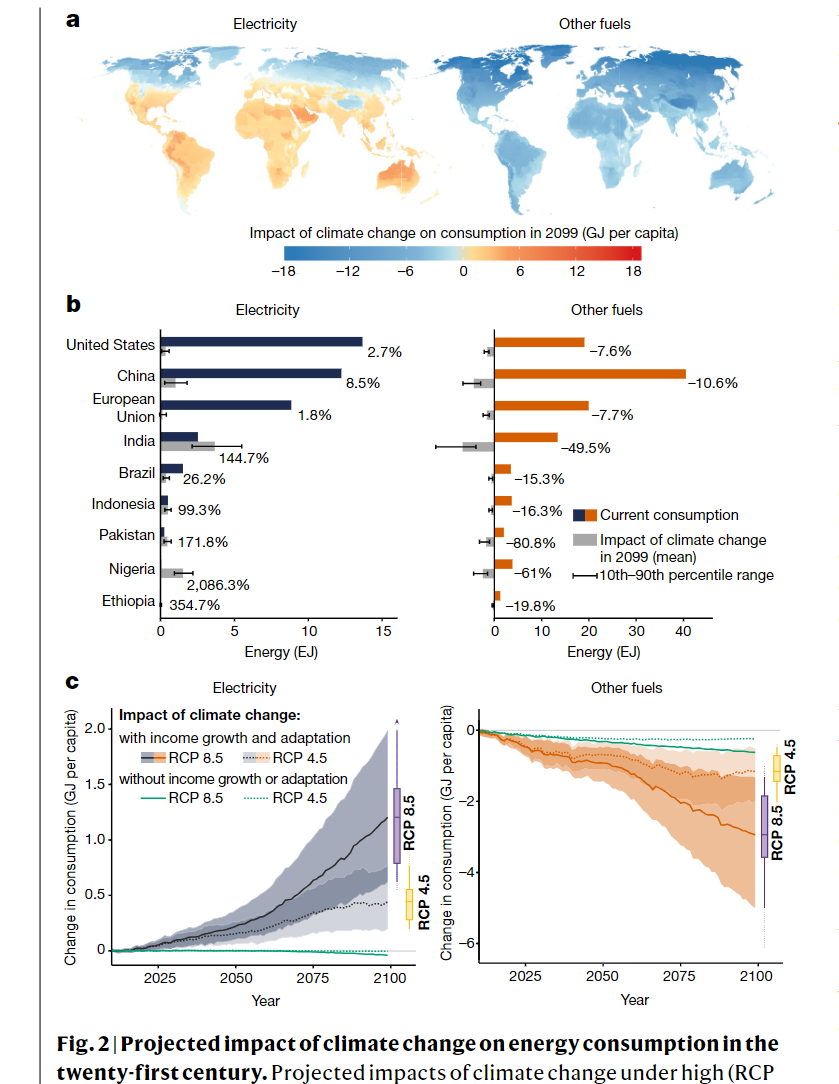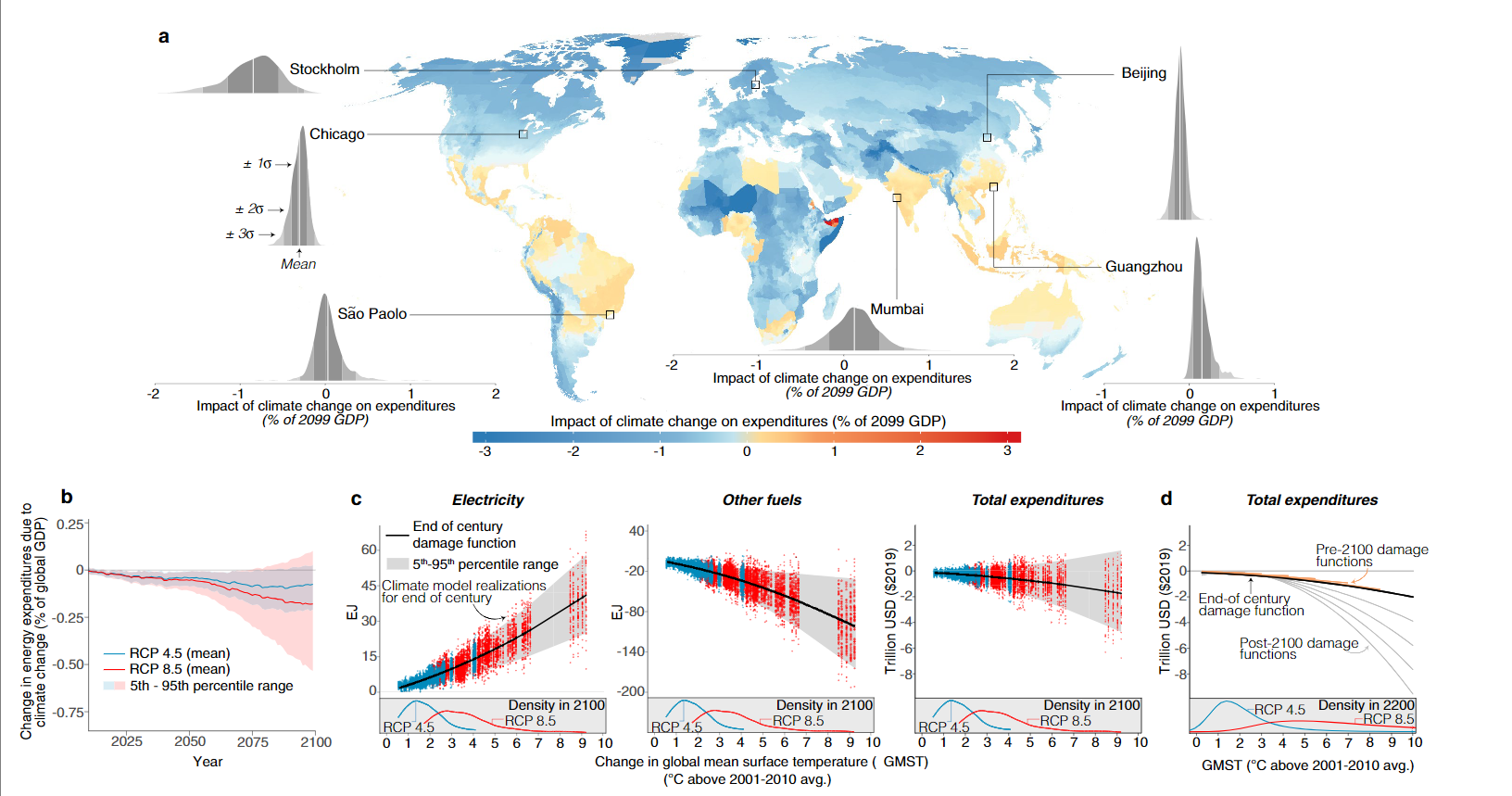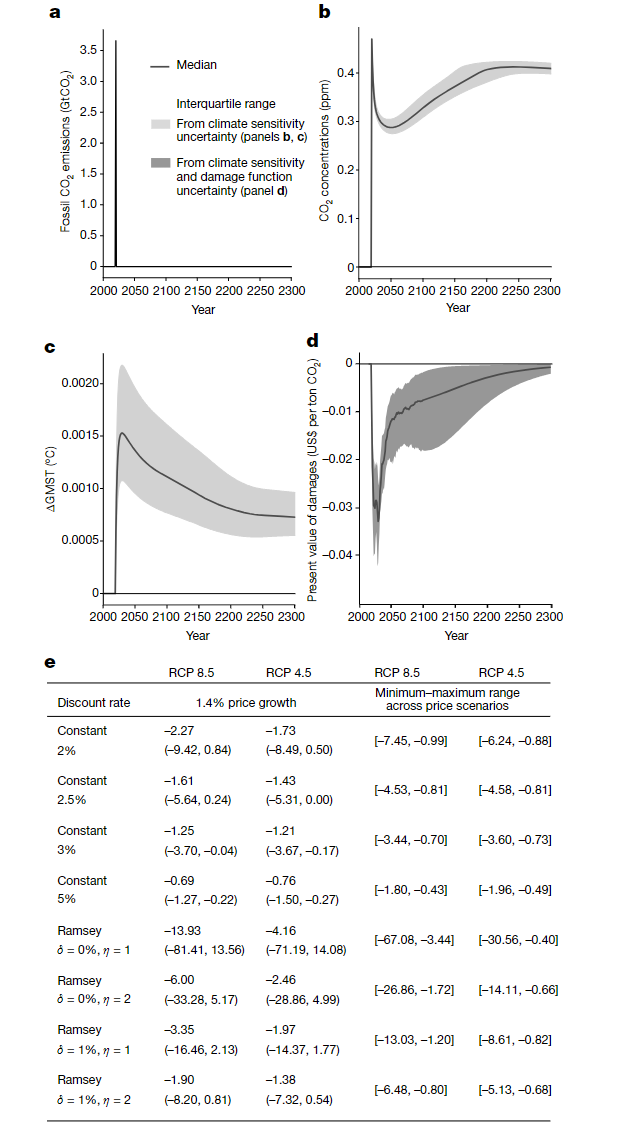Objective:
- Design a fully modular bottom up architechture, Data-driven spatial climate impact model to develop partial socia cost of carbon (SCC) for individual subsectors of the global economy
Case:
Methodology:
- DSCIM mode:
- Match data
- OLS: historical temperature distributions on national annual per-capita energy consumption
- Coupled model intercomparison project phase 5
- damage function
- probabilistic climate-carbon cycle model
- Energy consumption: IEA (0.25*0.25), electricity and direct fuel consumption across reisidential, commercial, industrial and agricultural end-uses in 146 countries
- Daily temperature: Global meteorological forcing dataset
- Future temporature: Nasa earth exchange global daily downscaled projections
- National income per capita are derived from the shared socioeconomic pathways
Findings:
- Population’s income per capita is a key determinant of how its end-use energy consumption responds to temperature
- U-shaped electricity-temperature relationship can be observed, and L-shaped fuels-temperature relationship is identified; these impacts can be enhanced by income growth


- Population adapt to their long-run climate in ways that change their energy consumption during hot and cold periods
- Most of the world is expected to increase net annual per-capital electricity consumption and decrease consumption of other fuels due to climate change
- Hot and wealthy locations show large net increases in electricity consumption

- 1 t of CO2 emitted today generates a total energy expenditure burden valued at -US $13.93 to -US0.69

Coding Reference:




